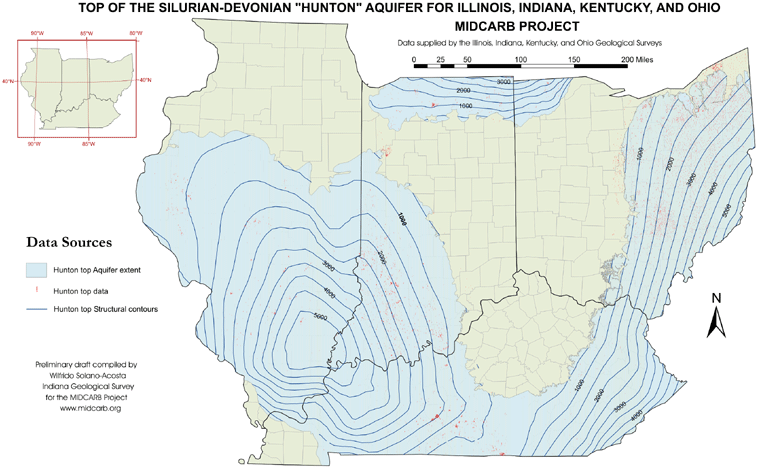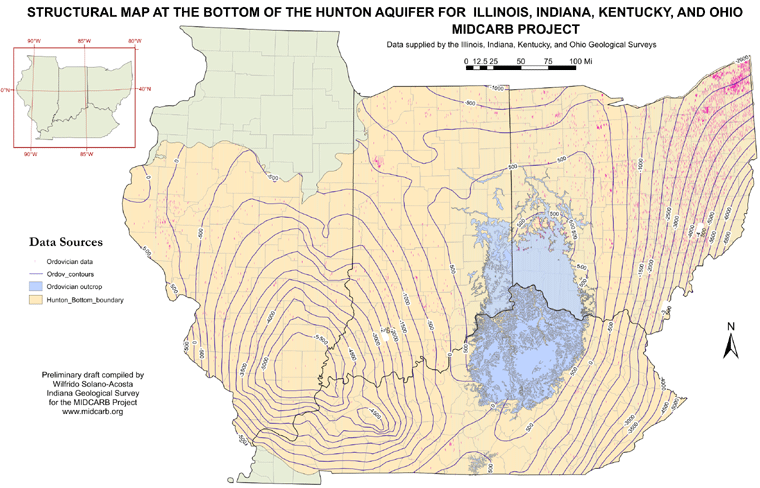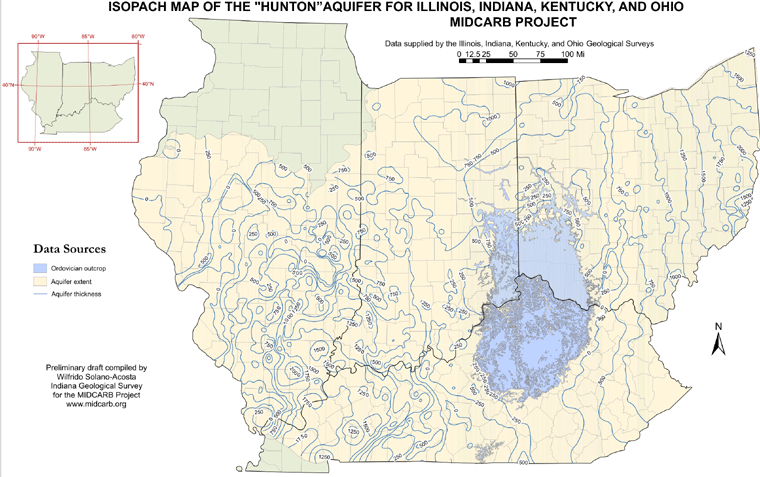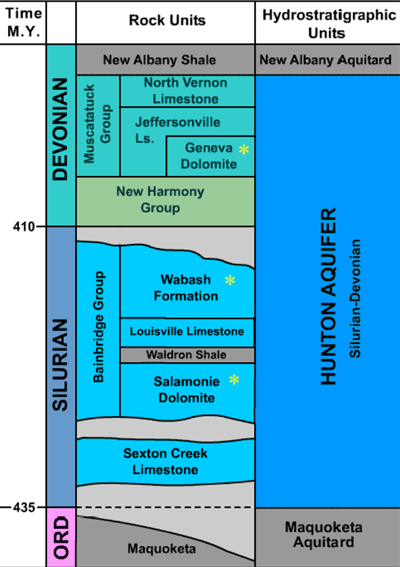 |

|
Kansas Geological Survey Open-file Report 2003-33 |
Examples of Saline Aquifer Products Under Development as Part of the MIDCARB Project
Devonian-Silurian Saline Aquifers
Devonian-Silurian carbonates of the “Hunton Aquifer” contain a number of highly pourous interval (e.g., Geneva Dolomite, Wabash Formation and Salamonie Dolomite). These intervals have a long history of usage for the disposal of oil field brines and these saline aquifer intervals represent excellent candidate reservoirs for CO2 sequestration. Favorable sequestration attributes of the Hunton Aquifer include; relatively high porosity (up to 15%), permeability, lateral continuity over a multistate area, thickness (up to 2000+ feet), a range of depths, and confinement of the aquifer intervals between two aquitard intervals (the overlying New Albany Shale and the underlying shaley carbonates of the Maquoketa Formation). Salinity within the Hunton Aquifer is highly variable, but has an average within the range of 60,000 to 90,000 ppm total dissolved solids. The Hunton Aquifer is located throughout a region of the Midwest with large population and large source of anthropogenic CO2. Preliminary estimates indicate that the Hunton Aquifer has the potential to sequester significant volumes of CO2 (Solano-Acosta, Rupp and Zuppan, 2002). Estimated CO2 sequestration volumes range up to 42 billion short-tons (726 trillion cubic feet).




|
|
Last updated June 2003
http://www.kgs.ku.edu/PRS/publication//2003/2003-33/P3-01.html